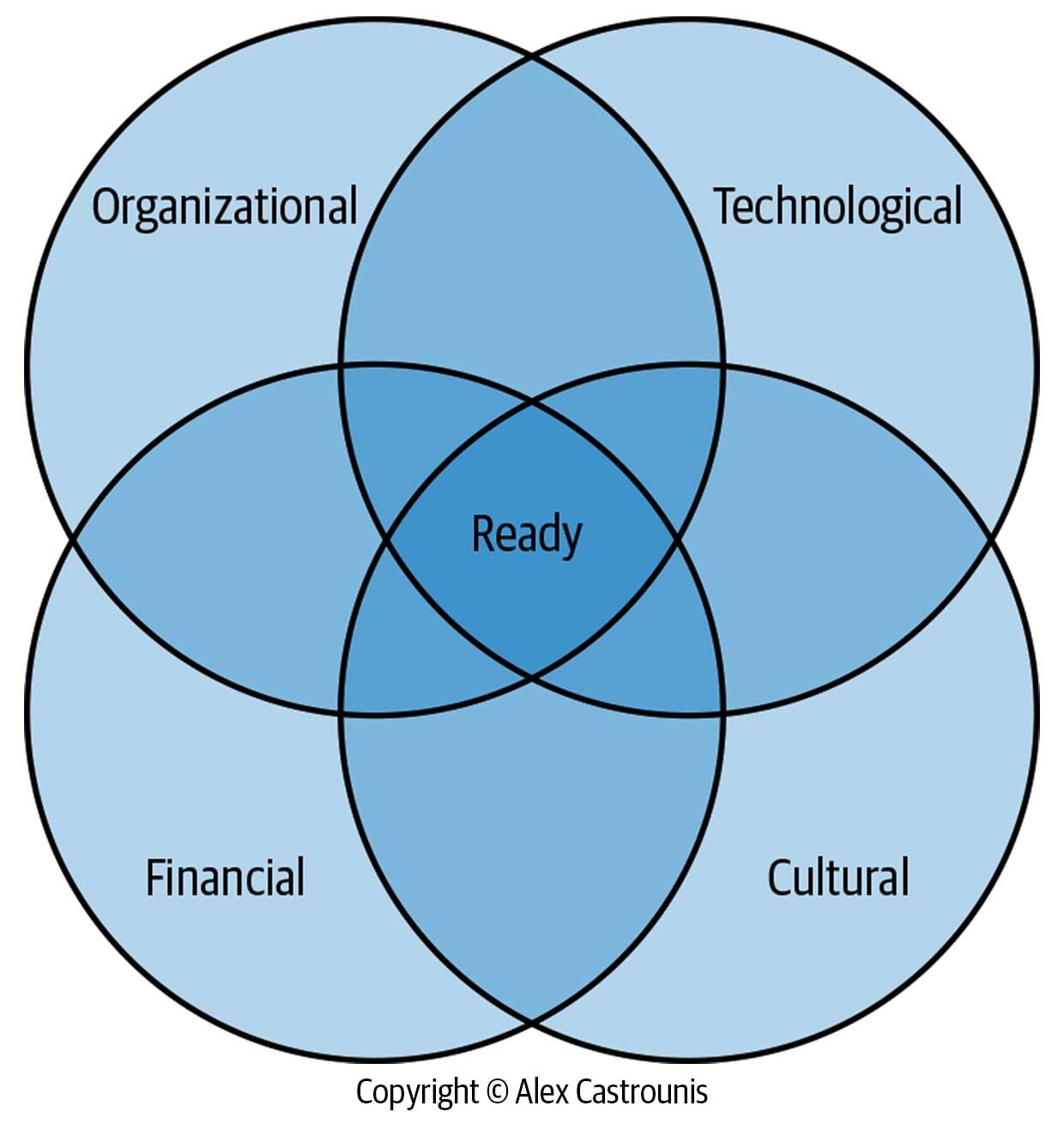Is Your Company Ready For AI
To pursue and generate real value from an AI initiative, companies must have a certain degree of AI readiness. I’ve identified four key contributors to AI readiness (see Figure 1):
Organizational readiness
Technological readiness
Financial readiness
Cultural readiness
Figure 1. AI Readiness Model - The four key contributors to AI readiness
Organizational Readiness
Any company that is serious about AI must have the appropriate organizational structure, leadership, and talent in place. Most importantly, this means leadership in an analytics-specialized, senior-level executive role such as a chief AI officer (CAIO), chief analytics officer (CAO), or something similar.
A vision and strategy for each AI initiative is also needed. The vision articulates the why, how, and what; the strategy conveys the plan for making that vision a reality. Both the vision and the strategy must be shared with everyone involved in the AI initiative. In addition, all relevant stakeholders must adopt the initiative—taking ownership of some aspect of it as well as its overall success—and be aligned on how to execute the strategy.
Finally, key stakeholders must sponsor and support the initiative. That is, they must commit to providing the necessary resources to ensure the success of the initiative, and provide ongoing help with defining requirements, getting tasks done, answering questions, collaborating, setting expectations, and communicating progress.
Technological Readiness
AI initiatives require the use of specialized infrastructures and technologies. These could include cloud-based tools and services, analytics tools and algorithms, effective software development processes and methodologies, and so on, as well as people to use them. Companies must also have the tools, technologies, and personnel in place to support and maintain an AI solution after it’s built and deployed to production.
Another aspect of technological readiness is data readiness—in other words, whether the data you use for your AI initiative is the “right” data. Data quantity, depth, balance, representativeness, completeness, and cleanliness all contribute to data readiness. (For more on data readiness, see my article AI Data Readiness: Using the “Right” Data)
Financial Readiness
Nearly all initiatives, including AI initiatives, require a budget—money earmarked for the people, technology, and other resources needed to make the AI vision a reality. Be aware, though, that an AI budget often needs to be spread across multiple business groups. This can complicate efforts to obtain the necessary funds.
Most companies have high-priority company-wide goals and initiatives, but contain several internal departments that each have their own prioritized programs. This can result in a heated competition for resources. To ensure your AI effort receives the priority and investment it needs, you’ll need to make a compelling argument around business and use cases that are likely to drive significant value, benefits, and outcomes. Story-telling is critical here!
Cultural Readiness
Cultural readiness is about creating a culture, mindset, and set of processes that promote scientific innovation and disruption. Companies who achieve this have the best chance of using advanced technologies such as AI to differentiate themselves while also generating competitive advantage.
One way to promote scientific innovation and disruption is to ensure that decisions take data into account. Often, people make decisions driven almost entirely by gut feeling and historical precedent—what happened in similar situations in the past. Although this might work some of the time, it’s not the best approach. Instead, people should incorporate data into decision-making. Using data to make, or at least inform decisions almost always yields better outcomes.
Of course, people can only use data to drive decision-making if they can access it. Too often, though, data is siloed—accessible only to small groups. Tearing down silos and democratizing data—making it available for use by any authorized person inside the company—will yield sounder decisions and greater insights.
On the topic of insights: They’re only useful if your company is action-oriented—that is, willing to take the actions called for by the insights you generate. There is little point in generating highly actionable insights if nobody is willing to pull any of the levers indicated by these insights!
Conclusion
Attaining AI readiness involves realizing organizational readiness, technological readiness, financial readiness, and cultural readiness. Being ready in all these areas is the ideal scenario, but also very difficult to achieve. Indeed, some companies might never achieve readiness in all these areas, but this should not prevent them from pursuing their AI initiatives. The key is to identify gaps on a regular basis and then execute a strategy to fill them. To learn more, check out my book, AI for People and Business.

